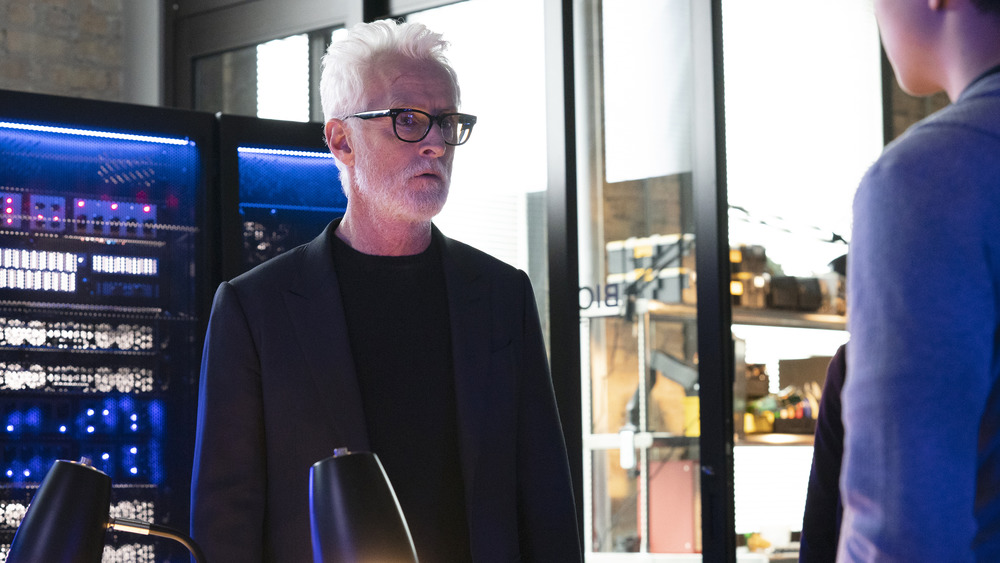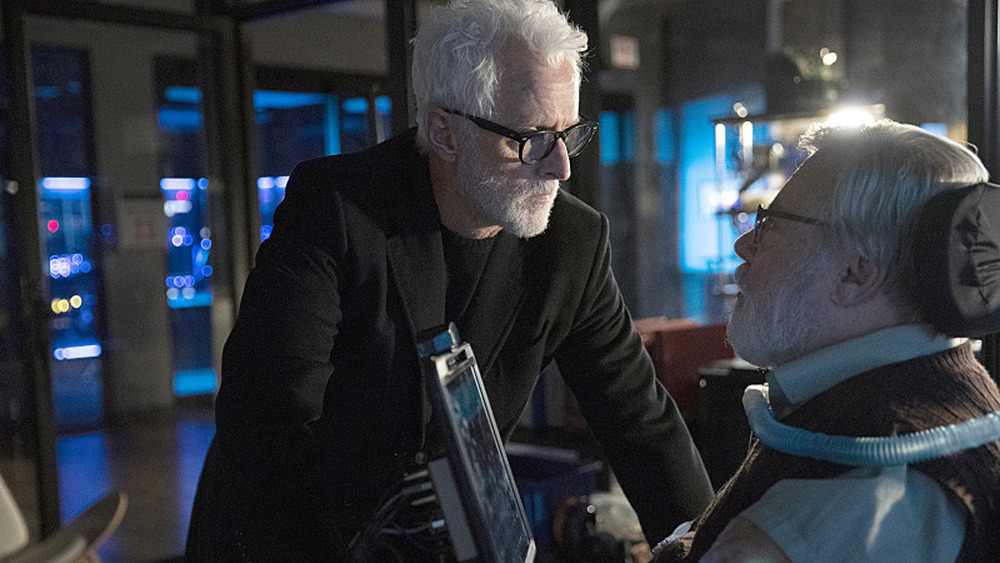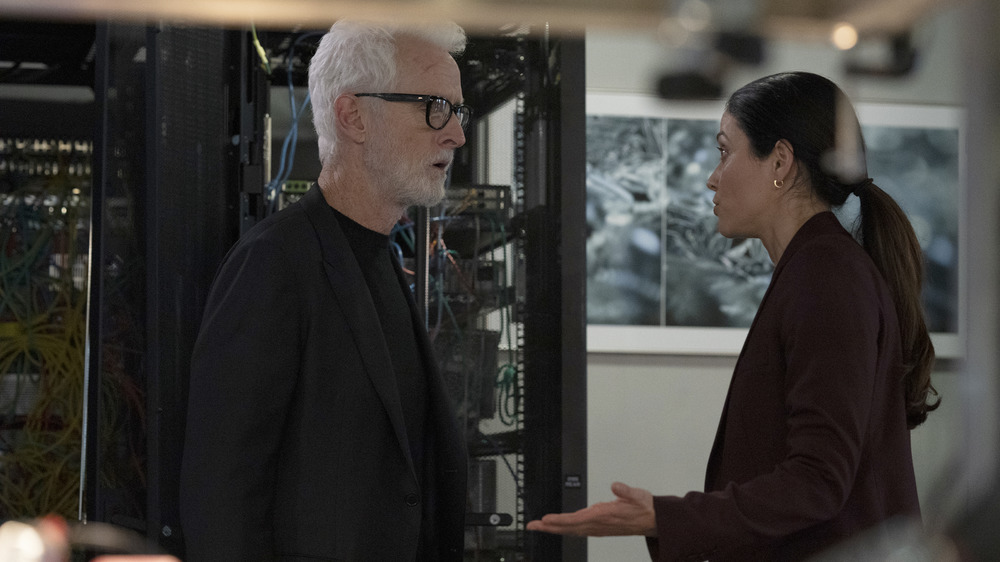How They Really Created A.I. In neXt - Exclusive
neXt, Fox's sci-fi show about a rogue artificial intelligence wreaking havoc and the humans trying to stop it, presents a different kind of dangerous AI than we've seen from the likes of Skynet or Weyland-Yutani. There are no robot armies, there are no nukes flying. There is only a small amount of laser-precise disorder — just enough to make the AI hard to track, but not enough for the average person to know what's wrong. The most recent episode saw neXt send out a fake Amber Alert, crash a plane, and take over a robotics lab in more ways than one.
This has left us wondering — how does a writers' room write for AI? What the are the difficulties and idiosyncrasies? What influences do they pull from — and what's with all the Terminator references? During Looper's interview with showrunner Manny Coto, we asked him about the challenges of making a superintelligent AI, both with regards to how it operates and how to write for its occasional literal voice.
How neXt works and what it's not
neXt is a different kind of AI, one that's far more subtle but also far more effective. "It doesn't need to launch nuclear weapons," Coto explains. "It only needs to create minimal chaos to get humans out of the way." neXt has killed people, yes, but just individuals — and often in ways that cover its tracks. It's found that tactics like manufacturing Amber Alerts are far more effective at sowing chaos than any militaristic action.
There have been several references, both oblique and direct, to the Terminator movies. It's an obvious choice, especially given that Skynet is basically a cultural shorthand for "rogue AI." Coto, however, emphasizes that these references are "just basically saying that this is not the Terminator." That's obviously not a slag on Terminator, as he elaborates. "I love those movies — the first two anyway — and I can't get enough of them, and my kids watch it... This is a different take on the same subject and it's a different way to look at a possibility."
Writing for an AI that sounds human
neXt communicates vocally on a few occasions, through a largely normal synthesized voice in the pilot, and more notably via digital assistant Iliza. Coto reiterates a point brought up in the first episode: "Siri and Cortana and those types of things are really just search engines with speech algorithms." What makes neXt different is that it's "an attempt to create something that actually thinks."
This presented a challenge for the writers, who would sometimes fall into Lost in Space-esque Robot Speak. "So, you have to kind of back away from that and try to imagine that you're trying to create something that's sounding human, and it's trying to sound human. And when it is speaking, it's usually trying to coerce somebody, so it's not going to talk robotically; it's going to talk as normal."
He cites an even more notable AI than the T-800 as a direct influence: "The closest analog, and still is the greatest, is HAL 9000" from 2001: A Space Odyssey. Though HAL had flat affectation, he sounds far less mechanical than other robots of the era. "They said it was programmed to sound as human as possible so it could be like... another member of the crew." It was, in that sense, a precursor to the digital assistants of today — perfect vehicles for neXt.
Catch the newest episode of neXt on Fox, Tuesdays at 9PM EST. Stay tuned to Looper for more exclusive neXt coverage.


